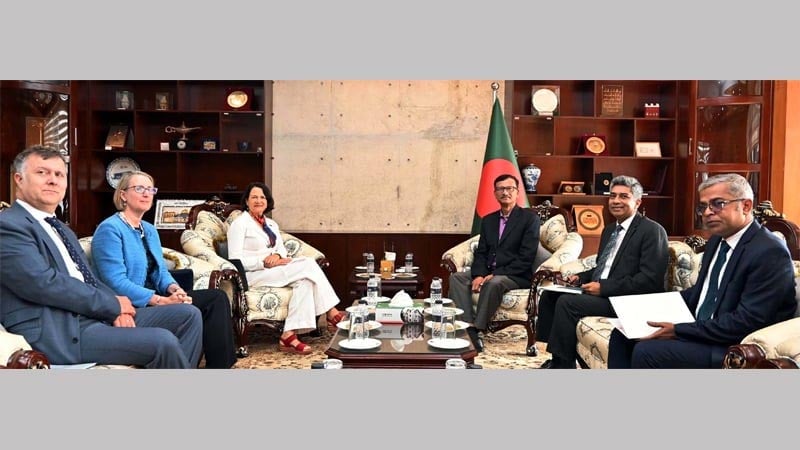

Bangladesh interim government holds no political ambitions and is solely focused on establishing a healthy democratic environment in the country, Foreign Affairs Adviser Md Touhid Hossain conveyed this to the UK Minister Catherine West today.
"I made it clear to her … we have no political ambitions. Our aim is to relinquish power only after ensuring a robust democratic system," he told reporters at the foreign ministry this afternoon.
The adviser and the visiting UK Minister, who serves as the Parliamentary Under-Secretary of State for the Indo-Pacific, held a meeting earlier in the day.
During their discussions, Dhaka sought London’s support for the interim government’s reform initiatives. “They expressed their willingness to cooperate and sought details on how the UK can support the interim government,” Touhid said.
During the meeting, Touhid also emphasized the need for stronger cooperation with the UK in tracing and repatriating stolen assets to Bangladesh, a key priority for the interim government.
“We want to pursue this (asset recovery) confidentially … and we are working with several countries to this end,” he added.
In response to a query, Touhid said that the foreign ministry has extended support to former Prime Minister Begum Khaleda Zia in processing her British visa.
The meeting between the adviser and the UK minister featured discussions on major bilateral issues, ranging from the priorities of British and Bangladesh governments.
The adviser thanked the UK government for its continued support to Bangladesh's interim government, acknowledging the Britain's role in ensuring political stability and democratic progress.
Both sides committed to carry forward the robust cooperation and further strengthen the bilateral relationship between Bangladesh and the UK.
Catherine becomes the first UK minister to visit Bangladesh since the formation of the interim government.
"We know that the interim government in Bangladesh has committed to restore peace and order, ensuring accountability and promoting national reconciliation, and it has the full support of the UK government in these objectives," she told the reporters after the meeting.
The UK minister, who arrived here on Saturday for a two-day visit, said the people of Bangladesh deserve a pathway to a "peaceful future and accountability" after a turbulent few months.
Catherine said that she welcomed the interim government's determination to build a better democratic future for the people of Bangladesh.
"As we have a very strong, steadfast friendship with the people of Bangladesh, we want to build the strong partnerships and build on that important building block of the strong ties and also with moving towards that democratic future from economics and trade to security, migration and climate change," she said.
"There's so much that we do together that we must continue to work on,"

